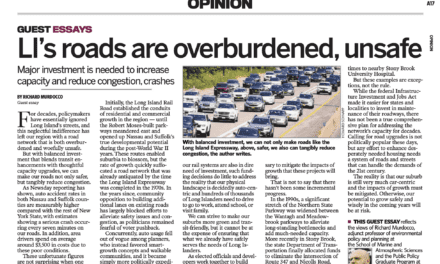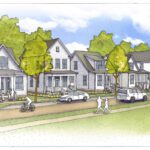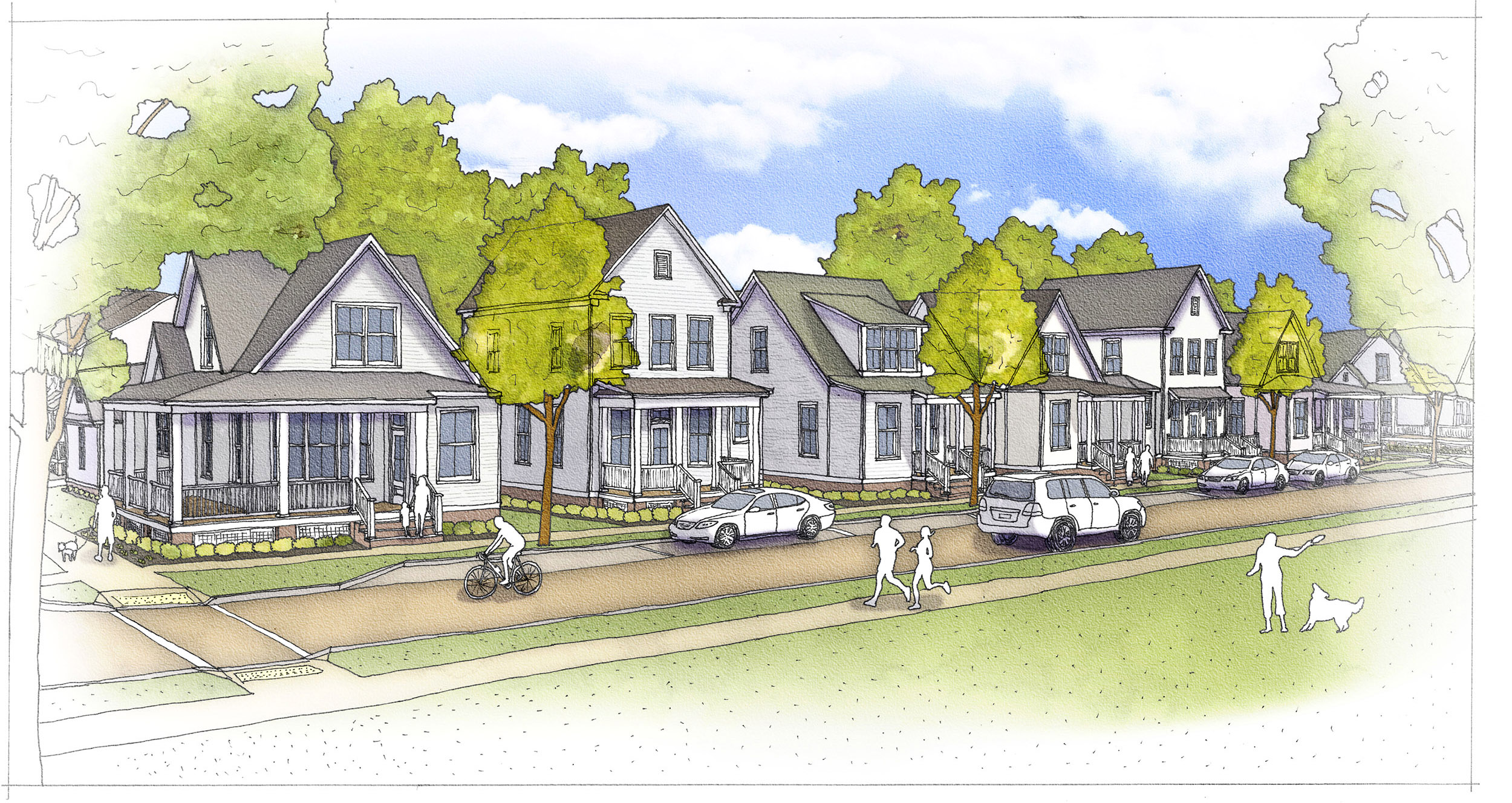As any driver in Nassau and Suffolk County knows, Long Island’s roads are crumbling.
Nassau County is taking steps to rehabilitate county roadways, but it seems their methods have been mired in controversy thanks to large-scale tree removal efforts that have been undertaken in recent months. First there was Seaford, now Syosset, Plainview and Bethpage are next.
Is the county wrong, or are the rehabilitation projects sound planning? The answer is more complicated than one would think.
There are few redeeming qualities about South Oyster Bay Road, Nassau County’s main arterial roadway that connects the southern edge of Syosset to the formerly bustling industrial center of Bethpage. The only nice thing about the road is the canopy of trees that line the corridor, creating a boulevard-like aesthetic that stands in sharp contrast to the traffic flow.
It’s loud, congested and always busy. It’s also a trucking route, with the semis rumbling to and from the LIE putting additional wear on an already-worn out road. It’s a mess.
Despite the route’s livability issues, residents in adjacent subdivisions between Old Country Road and the Northern State Parkway enjoy walking the thoroughfare, and frequent the sidewalks to access the Plainview Shopping Centre and other commercial strips in the area.
In the past three weeks, Nassau’s Department of Public Works has begun a massive roadway rehabilitation project to resurface the road and replace the sidewalks and curbs. In order to do so, DPW must remove the mature, 50-plus year old trees that line the route. Those marked for removal are spray painted with a distinctive white X. For residents, the tree removal seemed to come out of nowhere, blindsiding the adjacent communities with an abrupt change of aesthetics that has been in the works since the project bids went public in May of this year.
Residents were swift with their opposition to DPW’s plans. Tanya Lukasik, a concerned former resident who has recently returned to the area, rallied locals by forming Operation STOMP, a group working to stop further removal of trees. Their methods of choice have included online petitions and bombarding the offices of DPW, County Executive Ed Mangano and Legis. Judy Jacobs with phone calls. So far, STOMP supporters have held meetings, protests and appeared on local news outlets voicing their concerns.
The reason for the mass removal, according to Michael Martino, DPW’s spokesman, is that the South Oyster Bay Road’s sidewalks and underground utilities are slowly being destroyed by the tree roots. Martino, over the course of conversation during a recent late afternoon, stressed how, as he put it, the department has been “extremely sensitive to community feelings” and even brought in the department’s arborist to re-examine the initial assessment.
Martino explained DPW must ensure the county’s sidewalks are ADA compliant, and that residents have complained, tripped and “put the county on notice.” According to DPW, the tree removal is even more necessary because the area’s underground utilities are being impacted by the ever-expanding root networks, further necessitating the work.
As the complaints concerning the sidewalks piled up, Martino said “the importance of us acting grew. Now, the county can’t just sit back and not act in the interest of public safety.” Martino stressed that the trees are going to be replaced in what he called “an aggressive replanting strategy,” and in some cases at a ratio of two new trees per each one removed.
When recently asked her thoughts on the issue, veteran Nassau County Legis. Judy Jacobs, who noted her background in area civic groups and as an environmentalist, felt that people need to realize just how complex the issue is.
“There are too many pieces – the puzzle is too big,” she said. “The bottom line though is safety. The roadway has many components, and the county is now on notice. There is enough concern to fix the sidewalks.”
From a planning perspective, it’s easy to understand the positions taken from all involved. What must be reiterated, and what has to be communicated to residents, DPW and Legis. Jacobs, is the need for a standardized process of communicating the scope and breadth of large-scale projects. Simple re-pavings are one thing, but when the character of the area is being changed, the public should be brought in earlier in the process. While a full-fledged public meeting would result in chaos, and may even be counterproductive for all involved, a controlled public input session would be productive for all sides involved.
Efforts to engage an increasingly distracted public are critical for a project’s success, and in that regard, DPW missed the mark. When the majority of the trees were planted 50 years ago, planning standards weren’t fully understood, and no thought was given to which trees are appropriate for long-term growth near sidewalks. Now, it’s understood which species have roots that grow downward, not out – a critical difference. The safety concerns are legitimate, as are the logistics of spending taxpayer money on sidewalks that will be destroyed by roots in a year or so. The county’s replanting will take into consideration the condition of the sidewalks in the long run, while growing to near the size of the current trees.
Moving forward, Nassau County will have to eventually remove certain species of trees along other county roads, which is going to spark outcry. If residents are told in advance of the coming changes, and are given the opportunity to not only comment on the process, but help shape it, all involved would be better off.
Normally, resident protests concerning tree removal has little regional impact, and may even be considered NIMBYism taken to the extreme. In this instance, the pattern of removal and resident outcry after the fact in different communities should catch Long Islanders’ attention.
As the county roads deteriorate further, residents should expect change. That doesn’t mean that both the county and DPW shouldn’t allow the public to have their say. Standardization of public input is not only key, it is the right thing to do.











The legacy of Judy Jacobs will be tainted by the destruction that occurred in her district. Five years later, the landscape is as ugly as when the beautiful canopy of trees were hastily removed without public input.
The callous removal of a beautiful canopy of decades old trees makes evident that the county doesn’t care about the quality of life in our communities and are bound by the powers-that-be to put profits above people.